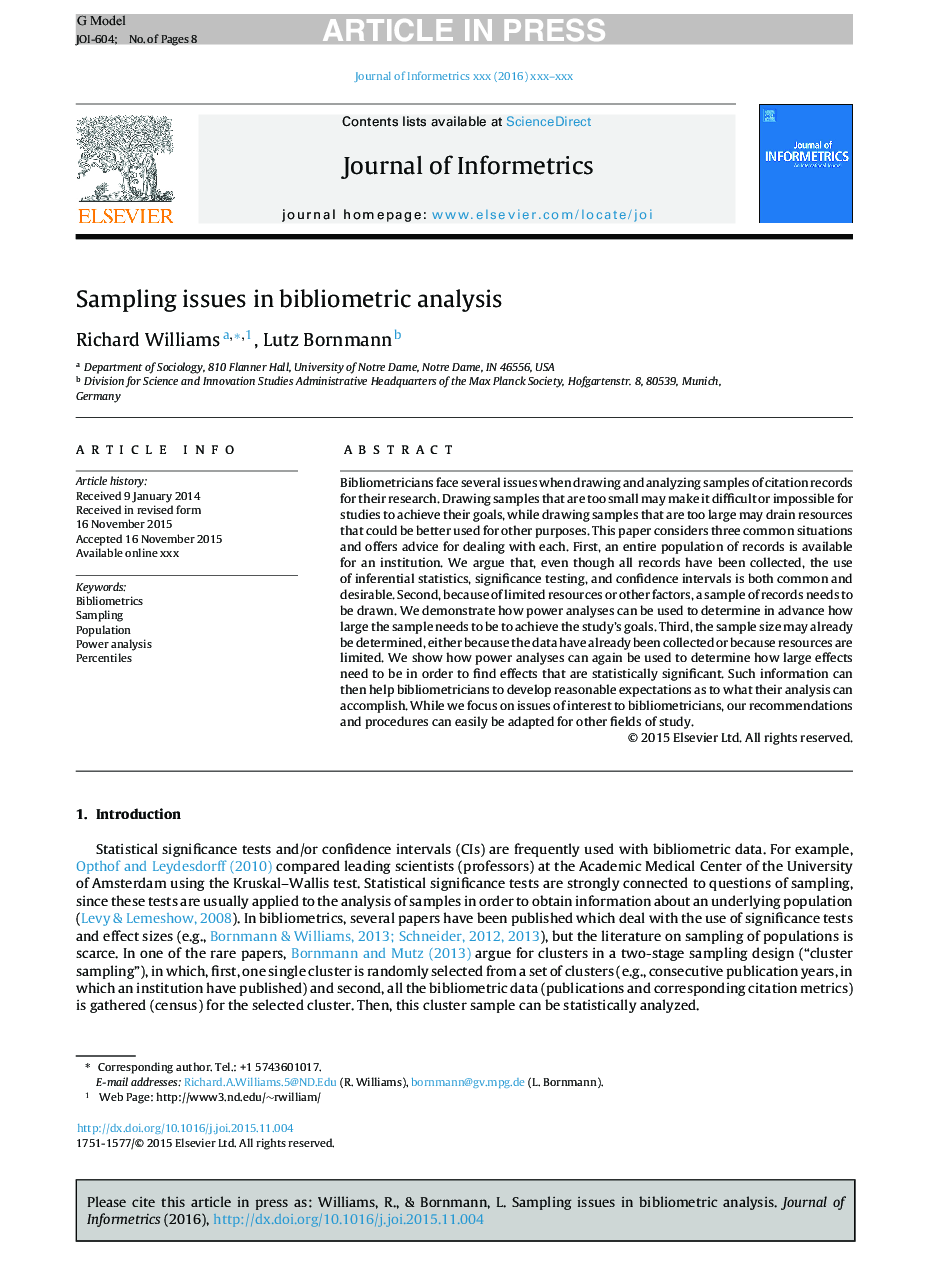| Article ID | Journal | Published Year | Pages | File Type |
|---|---|---|---|---|
| 6934311 | Journal of Informetrics | 2016 | 8 Pages |
Abstract
Bibliometricians face several issues when drawing and analyzing samples of citation records for their research. Drawing samples that are too small may make it difficult or impossible for studies to achieve their goals, while drawing samples that are too large may drain resources that could be better used for other purposes. This paper considers three common situations and offers advice for dealing with each. First, an entire population of records is available for an institution. We argue that, even though all records have been collected, the use of inferential statistics, significance testing, and confidence intervals is both common and desirable. Second, because of limited resources or other factors, a sample of records needs to be drawn. We demonstrate how power analyses can be used to determine in advance how large the sample needs to be to achieve the study's goals. Third, the sample size may already be determined, either because the data have already been collected or because resources are limited. We show how power analyses can again be used to determine how large effects need to be in order to find effects that are statistically significant. Such information can then help bibliometricians to develop reasonable expectations as to what their analysis can accomplish. While we focus on issues of interest to bibliometricians, our recommendations and procedures can easily be adapted for other fields of study.
Related Topics
Physical Sciences and Engineering
Computer Science
Computer Science Applications
Authors
Richard Williams, Lutz Bornmann,
